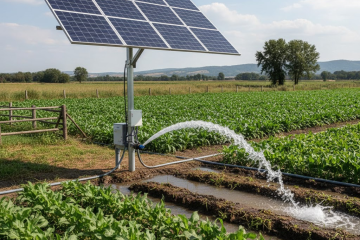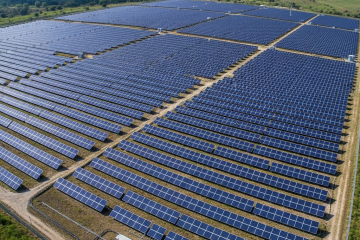
At the center of every solar energy system lies the PV Module. These are the engines that convert sunlight into Direct Current (DC) electricity. Modern modules have evolved significantly from the blue, polycrystalline panels of the past.
Today, we use high-efficiency monocrystalline cells, often in **half-cut** configurations. Cutting cells in half reduces internal resistance, boosting power and improving durability. We also see **bifacial** designs that generate power from both sides. It is important to remember that a module’s output isn’t static; it varies instantaneously with irradiance, temperature, and shading.
But modules cannot float in the air. They require a Module Mounting Structure (MMS). The MMS is not just a stand; it is a critical structural component that sets the tilt and orientation for maximum generation. It must ensure mechanical stability against wind speeds of 150 km/h or more. In the electrical hierarchy, several modules are connected in series to form strings, creating high-voltage DC circuits (often 400–1,000V). This necessitates disciplined handling and specialized protection at the DC Distribution Box (DCDB).



0 Comments